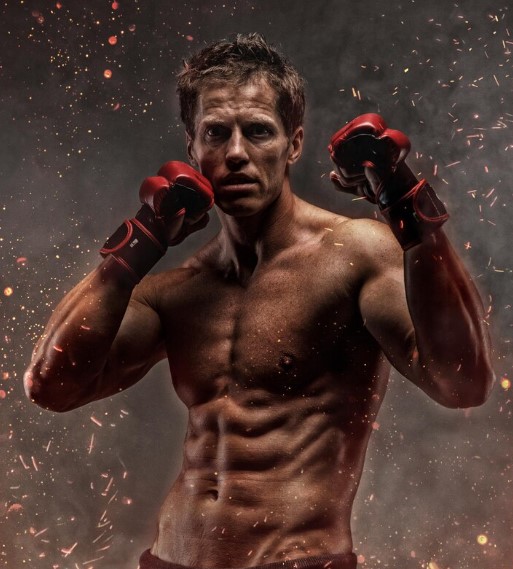Striking techniques form the bedrock of combat sports and stand-up fighting within MMA. They are not just about throwing punches or kicks. Striking is an art that involves timing, precision, and tactical execution.
This article unpacks the complex world of striking techniques, from the basic mechanics to the strategic application in combat scenarios.
Fundamentals of striking
Before delving into complex combinations, a fighter must master the fundamentals of striking. It begins with understanding stance and balance, which are crucial for offensive and defensive manoeuvres. A stable yet dynamic stance allows a fighter to generate maximum power while maintaining the ability to move fluidly.
Fighters often learn the jab first, a fast, straight punch thrown with the front hand. It serves multiple purposes: measuring distance, setting up combinations, and disrupting an opponent’s rhythm. The cross, tossed with the rear hand, is a powerful straight punch that follows the jab. It aims to capitalize on openings created by the initial strike.
Diversity of strikes
Beyond the foundational punches, fighters train in various strikes to target different areas of an opponent’s body. Hooks and uppercuts are crucial for in-fighting, delivering power at close range. Kicks, knees, and elbows expand a fighter’s arsenal to strike from various ranges and angles.
Here is a table illustrating some joint strikes and their targets:
| Strike Type | Target Area | Description |
|---|---|---|
| Jab | Head, body | A quick, straight punch to gauge distance or begin a combination. |
| Cross | Head, body | A powerful straight punch following a jab, aimed at an opening. |
| Hook | Head, body | A curved punch that comes from the side to strike around an opponent’s guard. |
| Uppercut | Chin, torso | An upward punch that can break through an opponent’s guard to hit the chin or body. |
| Roundhouse Kick | Legs, body, head | A circular kick that can target an opponent’s legs, ribs, or head. |
| Front Kick | Midsection, face | A direct kick aimed at pushing an opponent back or striking the face. |
| Knee Strike | Body, head | A close-range strike using the knee, effective in the clinch. |
| Elbow Strike | Head, cut inducing | A close-range strike using the elbow, often aimed at the head or to induce cuts. |
What about striking combinations?
Combining strikes is where the strategy of striking truly comes into play. Fighters train to link punches and kicks together in smooth flows that break through guards and make gaps. Coaches stress mixing up these moves, adding fake moves, and hitting high and low to confuse the opponent.
For example, a classic combination is the ‘jab-cross-hook.’ This combination begins with a jab to get closer, then a cross to get the opponent to guard, and ends with a hook to hit around the opponent’s defence. Each strike sets up the next, creating a rhythmic flow that can overwhelm an opponent.
Defensive aspects of striking
Defensive techniques are just as important as offensive ones in striking. Fighters must learn to parry, block, and evade incoming strikes. Head movement and footwork are essential, allowing a fighter to dodge attacks and counter them immediately.
Good strikers also understand the concept of ‘range management’. It involves maintaining the optimal distance to execute their strikes while minimizing the risk of counterattacks. Mastery of range can dictate the pace of a fight and keep an opponent at bay.
Conclusion
As you can see, striking requires patience, practice, and strategic thinking. It is a blend of brute force and balletic precision that can define the outcome of a match. Seek out a qualified coach and begin your journey in the world of combat sports. Embrace the discipline, and you can master the striking techniques that have captivated fans and fighters alike!



